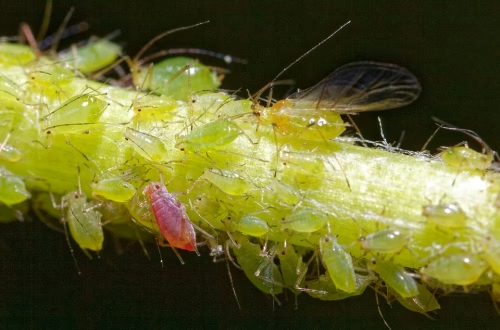Summary:
Humane animal removal is a critical aspect of pest management that ensures the ethical and safe relocation of wildlife and pests from human-inhabited areas. This approach addresses issues such as property damage, health risks, and environmental imbalance while adhering to state and federal wildlife protection laws. Homeowners, businesses, and local ecosystems benefit from this method, as it promotes coexistence and sustainability. By understanding and implementing humane removal strategies, individuals can protect their property and contribute to conservation efforts, making it a practice worth adopting.
What This Means for You:
- Learn how to identify and address pest issues without causing harm to animals.
- Follow actionable steps to prevent wildlife from entering your property.
- Choose a pest control service that specializes in humane removal techniques.
- Be aware of the legal and environmental consequences of improper pest control methods.
Humane Animal Removal Explained:
Humane animal removal refers to the ethical and safe process of relocating wildlife or pests from residential, commercial, or industrial properties without causing harm or distress to the animals. This method prioritizes the well-being of the animals while addressing the concerns of property owners. Unlike traditional pest control, which often involves lethal measures, humane removal focuses on exclusion, trapping, and relocation techniques that are both effective and compassionate. It ensures that ecosystems remain balanced and that protected species are handled in compliance with conservation laws.
This approach is particularly important in urban and suburban areas where human-wildlife conflicts are common. By using humane methods, pest control professionals can mitigate risks such as property damage, disease transmission, and animal overpopulation. Additionally, humane removal aligns with the growing public demand for environmentally responsible solutions, making it a preferred choice for many homeowners and businesses.
Types of Pest Issues:
Pest issues requiring humane removal can range from small animals like squirrels and raccoons to larger wildlife such as deer or coyotes. Common problems include animals nesting in attics, basements, or gardens, which can lead to structural damage or health hazards. Invasive species, such as feral hogs or certain bird species, also pose significant challenges, as they disrupt local ecosystems and agricultural activities. State and federal laws often protect specific wildlife, making it illegal to harm or kill them without proper permits.
For example, in California, the Department of Fish and Wildlife regulates the removal of species like raccoons and opossums, requiring humane methods to avoid legal penalties. Similarly, the Migratory Bird Treaty Act protects birds like pigeons and sparrows, mandating non-lethal removal techniques. Understanding these laws is essential for property owners and pest control professionals to ensure compliance while effectively addressing pest issues.
Common Pest Control Methods:
Humane animal removal employs a variety of methods to address pest issues without harming the animals. Exclusion is a primary strategy, involving the sealing of entry points to prevent wildlife from entering buildings. This can include installing mesh screens, repairing cracks, or using chimney caps. Live trapping is another common method, where animals are captured in non-lethal traps and relocated to suitable habitats. Professionals often use bait and lure techniques to attract animals safely.
Repellents and deterrents, such as ultrasonic devices or natural sprays, can also be effective in keeping pests away without causing harm. For example, peppermint oil is commonly used to repel rodents, while motion-activated sprinklers deter larger animals like deer. Combining these methods with regular inspections ensures long-term pest control while maintaining ethical standards.
Risks and Consequences:
Ignoring pest issues or using inhumane removal methods can lead to severe consequences. Animals trapped or killed improperly can suffer unnecessarily, raising ethical concerns and potentially violating wildlife protection laws. Additionally, pests left unchecked can cause significant property damage, such as chewed wires, insulation destruction, and structural weakening. Health risks are another major concern, as many pests carry diseases like rabies, hantavirus, or leptospirosis, which can be transmitted to humans and pets.
Environmental impacts are also a critical consideration. Killing or displacing wildlife without proper planning can disrupt local ecosystems, leading to imbalances that affect other species and habitats. For instance, eliminating predators can result in overpopulation of prey species, causing further ecological issues. By opting for humane removal, individuals can mitigate these risks and contribute to a healthier, more balanced environment.
Choosing a Pest Control Service:
Selecting a pest control service that specializes in humane animal removal is crucial for effective and ethical results. Look for companies with certifications in wildlife management and a proven track record of humane practices. Experience in handling specific pests, such as bats, raccoons, or snakes, is also important, as different animals require unique techniques. Check reviews and ask for references to ensure the company’s reliability and professionalism.
It’s essential to verify that the service complies with state and federal wildlife laws, as improper handling can result in legal consequences. Additionally, inquire about the methods they use, ensuring they prioritize exclusion, live trapping, and relocation over lethal measures. A reputable service will also offer preventative advice to help you avoid future pest issues, making them a valuable partner in maintaining a pest-free property.
People Also Ask About:
- What is the most humane way to remove rodents? The most humane method involves live trapping and relocating rodents to a suitable habitat away from your property, combined with sealing entry points to prevent re-entry.
- Is it legal to remove wildlife from my property? Yes, but it must be done in compliance with state and federal laws, which often require humane methods and permits for certain species.
- How can I prevent animals from entering my home? Seal all potential entry points, such as cracks, vents, and chimneys, and use deterrents like repellents or motion-activated devices.
- What should I do if I find a wild animal in my attic? Contact a professional pest control service experienced in humane removal to safely trap and relocate the animal.
- Are there eco-friendly pest control options? Yes, humane animal removal is an eco-friendly option that prioritizes the well-being of animals and the environment.
Expert Opinion:
Humane animal removal is not only an ethical choice but also a sustainable one. As urbanization increases, so do human-wildlife interactions, making it essential to adopt methods that protect both people and animals. Professional pest control services that specialize in humane practices are better equipped to handle these challenges effectively. However, public awareness and proactive prevention remain key to reducing conflicts and ensuring long-term solutions.
Related Key Terms:
- humane wildlife removal services
- ethical pest control methods
- live trapping and relocation
- wildlife exclusion techniques
- eco-friendly pest management
- state wildlife protection laws
- animal-friendly pest solutions
Pest Control Disclaimer
This content is for educational purposes only and does not replace professional pest inspection, treatment, or safety advice. Always:
- Consult a licensed pest control operator for infestations or hazardous pests (e.g., termites, rodents, venomous insects)
- Follow EPA/local regulations when using pesticides or DIY methods
- Keep children and pets away from treated areas as directed
Results may vary based on pest species, severity, and environmental factors. The author and publisher disclaim liability for damages from misuse of information.
*Featured image sourced by Pixabay.com




